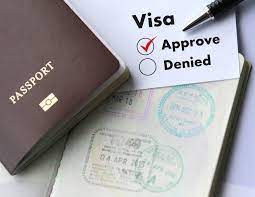Welcome to the world of hassle-free travel! In this fast-paced era, where time is everything and convenience is king, we are constantly seeking ways to simplify our lives – especially when it comes to exploring new destinations. And that’s where the Indian eVisa steps in, revolutionizing the way travelers enter this vibrant country. Gone are the days of lengthy paperwork and endless queues at embassies; with just a few clicks, you can now obtain your visa conveniently right at the airport or seaport upon arrival. Join us on an exciting journey as we unravel the wonders of this newfound ease and embark on unforgettable adventures in India without any unnecessary stress or worries! Indian eVisa Airport and Seaports for Entry
Introduction to Indian eVisa:
India has become a popular destination for tourists and business travelers from all over the world. With its rich culture, history, and diverse landscapes, India offers an unforgettable experience to anyone who visits. However, obtaining a traditional visa to enter India can sometimes be a lengthy and complicated process. In order to simplify this process and make it more convenient for travelers, the Indian government introduced the eVisa system in 2014.
The Indian eVisa is an electronic travel authorization that allows foreign nationals to enter India for various purposes such as tourism, business, medical treatment or conference attendance. It is an online system that eliminates the need for applicants to visit an Indian embassy or consulate in person. This has made it easier and more efficient for travelers to obtain their visas without any hassle.
Types of Indian eVisas:
There are currently three types of Indian eVisas available – Tourist eVisa, Business eVisa, and Medical eVisa. The tourist and business visas have a validity period of one year from the date of issue while the medical visa is valid for up to 60 days with triple entries allowed during this period.
The Tourist eVisa allows visitors to stay in India for up to 90 days at a time with double entry permitted within this period. This type of visa is suitable for those visiting India for leisure purposes such as sightseeing or attending cultural events. Indian eVisa ports allowed for exit
Benefits of eVisa at Airport and Seaports
The Indian government introduced the eVisa system in 2014, revolutionizing the way foreigners travel to and within India. With just a few clicks, travelers can now obtain an electronic visa (eVisa) online and skip the long lines at Indian embassies or consulates. The convenience of this system has been further enhanced with the introduction of eVisa services at major airports and seaports in India.
But what exactly are the benefits of using an eVisa at these entry points? Let’s take a closer look:
- Time-Saving:
One of the biggest advantages of using an eVisa at airports and seaports is that it saves you time. As opposed to traditional visas, where you have to physically go to an embassy or consulate for processing, eVisas can be obtained from anywhere with an internet connection. This means that you don’t have to spend hours waiting in line or traveling to a different city just for your visa application.
- Convenient Application Process:
The process of obtaining an eVisa is simple and hassle-free. All you need is a valid passport, digital copies of your photograph and biometric page, as well as a credit/debit card for payment. The entire application process takes place online on the official government website, making it accessible 24/7.
How to apply for an eVisa?
Applying for an eVisa for India may seem like a daunting task, but with the convenience of being able to do it at airport and seaports upon arrival, it has become much simpler. In this section, we will guide you through the step-by-step process of applying for an Indian eVisa.
Step 1: Determine your eligibility
The first step before applying for an eVisa is to determine if you are eligible. The Indian government offers eVisas to citizens of over 160 countries, including the United States, Canada, Australia, and many European countries. However, there are certain requirements that need to be met in order to be eligible for an eVisa. These include having a valid passport from an eligible country with at least six months validity remaining and a return or onward ticket.
Step 2: Prepare required documents
Once you have determined your eligibility, it is important to ensure that you have all the necessary documents required for the application process. This includes a scanned copy of your passport’s bio page (the page with your personal information), a recent passport-sized photograph in digital format, and any additional documents depending on the type of eVisa you are applying for.

